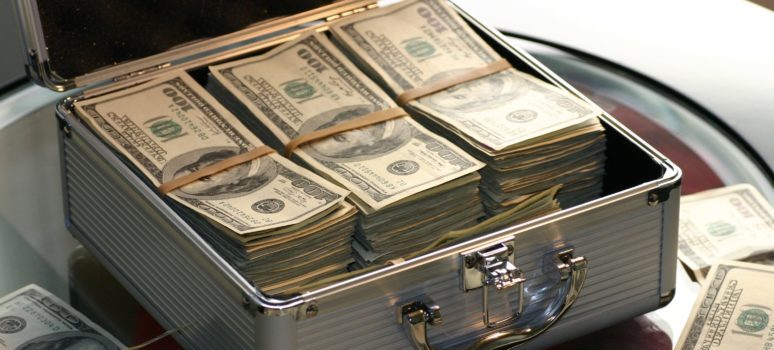One of the popular sports handicapping subjects that I come across with a lot of new clients is in regards to bankroll. The most popular being how much money do I need to start betting on sports and how do I manage it?
If this is something you are interested in, keep reading. First things first, I want make sure everyone reading this article has a clear understanding on what we are talking about.
Sports Betting Bankroll Management System
What is Bankroll?
You might think you know the answer. You might, but a lot of amateur bettors don’t. The majority think they have one in place, but most don’t. Failure to establish one can lead to a lot of the serious problems that you hear about with gambling. The first step I tell anyone who is looking to become a serious investor, is to get whatever you are willing to risk set aside just for sports betting.
If you lose all the money set aside (which I hope never happens), it shouldn’t have a negative effect on your day-to-day life. The money you used should only be for gambling. Cold streaks are going to happen. It’s just the nature of this industry. No matter how bad it gets, you should still be able to pay the monthly bills.
How much Money is Needed to Start Betting on Sports?
Once again, it all comes down to the amount of money that you have available. There’s no set amount needed to start. Just keep in mind the smaller the starting point the longer it’s going to take to see signfigant profits. If I was forced to pick a recommended amount to get started, I would say $1,000 is a good target to shoot for.
Proper Bankroll Management Tips: Understanding Units & Betting Size
Once you’ve completed the first step and have some cash set aside you are comfortable with, it’s time to focus on how to manage it so that you don’t have to ever reload. With the principles that I’m about to share, you will be able withstand those inevitable losing streaks without depleting your funds and have enough left in your account to reap the rewards when you hit your winning streak.
Have you ever lost a bet and the first instinct you have is to double-down on the next wager? If you answered yes, you are in the majority. Chances are you have also had some days at the books you would like to forget. It’s a prime example of why you don’t trust your gut.
Increasing your wager due a loss is known as chasing and it will cause you lose your money in no time. It’s without question the #1 reason most people are out of money just a month into a new season.
If you continue to chase, you can not call yourself a serious sports investor. This system is useless if you don’t stop making this mistake.
How Much Should You Wager on Each Bet?
This is a question I get asked all the time. It all comes down to your bankroll size and how much risk you are willing to take. The key is that you are betting only a percentage of your funds on each play.
What percentage to use? I don’t suggest having more than 5% of your bankroll on any one particular bet. This would be the highest risk. If you wanted to risk less, you could make your percentage be 3%.
Now that you have your number, you can figure out how much you should be wagering. Let’s say you chose 5% and have a starting point of $1,000. Your starting wager would be $50. This is also the most you should be betting on any single game.
If that doesn’t seem like a enough cash, you need to accept that’s all you can afford right now or add more money to funds. Don’t have any more funds to add? With this approach you can eventually get to that point.
Note that your bankroll is going to be an ever changing total. It will either go up or down based on how your bets went. To find your new wager amount, just take 5% of your current total.
Let’s say you had a good month and got you are up $1,500. Your 5% wager would now be $75. If you had a bad month, your wager size would decrease. This is how you avoid running dry on one of those dreaded cold streaks.
How to Adjust Your Stakes Based on Unit Sizes
In the previous example our entire focus was on one single wager for each play. This is a great strategy, but I understand it’s not for everyone. Not everyone wants to bet the same amount on each play. The good news is that there’s a system for those of you who want to wager different amounts.
In fact, I don’t bet the same amount on each play. I personally, have a rating system for all of my plays, which I use in accordance with this strategy. I rate my plays from 5*-3* with 5* being the highest and only the plays I’m the most confident in.
So with this, I risk 5% on my 5* plays, 4% on my 4* plays and 3% on my 3* selections. For all other wagers, such as free picks (plays that just miss out on premium card), I risk a mere 1%.
Note that the max amount of 5% doesn’t change. I just make it simple and base my unit sizes or play ratings off that number.
Handicappers have numerous ways of rating their plays and assigning them unit values. What I recommend doing is figuring out what numeric value they assign to their top play. This would become your 5% value and you just adjust down from there.



